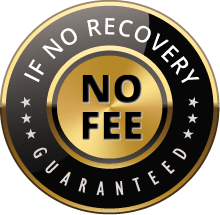 Hail may be only a momentary side effect of a larger storm, but hailstones have the ability to cause devastation in a matter of minutes. Every year since 2008, the annual cost of hail and storm damages has reached $19 billion or higher—and meteorologists don’t expect this trend to back down. Attorney Bill Voss breaks down what business owners need to know about commercial hail damage claims, including how to reduce the risk of damage and the steps to take after a storm.
Hail may be only a momentary side effect of a larger storm, but hailstones have the ability to cause devastation in a matter of minutes. Every year since 2008, the annual cost of hail and storm damages has reached $19 billion or higher—and meteorologists don’t expect this trend to back down. Attorney Bill Voss breaks down what business owners need to know about commercial hail damage claims, including how to reduce the risk of damage and the steps to take after a storm.
Why Are Hailstorms So Costly to Business Owners?
Certain areas of the country are more prone to inclement weather, with storms gathering intensity in the Great Plains before sweeping across the nation. As urban areas and suburban neighborhoods grow larger and larger, so does the potential for a hailstorm to strike a major city. Not surprisingly, roof damage is the single most-claimed item for repair or replacement after a hailstorm, placing business owners at risk of hundreds of thousands of dollars in commercial roofing claims.
Your business may be more likely to suffer devastating hail damage based on its:
- Location. States with dedicated hail seasons are at particular risk of damage, since these storms happen more frequently than in other areas. A recent report from the National Insurance Crime Bureau revealed that Texas led the nation in hail losses from 2013 to 2015 with 394,572 hail claims, while Colorado came in a close second at 182,591 claims. Coastal regions are also more susceptible to hailstorm damage, especially those with a high risk of hurricane activity (such as Florida).
- Age. Every passing year allows hail damage to weaken roofs, gutters, and flashing, making it easier for water to enter the structure. A slow leak can damage underlying roofing layers, framing, and drywall without obvious damage to the roof’s exterior components, ultimately reducing the lifespan of the roof. While large pockmarks or dents may be seen with the naked eye, it often takes a professional to spot the hidden damages caused by hail.
- Building design. The size and shape of a commercial building can impact the structure’s ability to cope with hailstones and inclement weather. High winds or golf-ball-sized hailstones can dent and pry up sheeting on flat roofs, allowing water to enter a structure. On the other hand, showrooms and car dealerships with floor-to-ceiling windows may be forced to replace several broken panels of expensive custom-made glass.
- Maintenance records. It is important to schedule regular inspections of commercial properties for many reasons. Inspections can identify potential safety hazards and inefficiencies, but they can also provide proof of conditions that are in good working order. If an insurance company denies payment based on pre-existing roof damage, a recent inspection report showing that the roof is in good condition can be invaluable.
- Industry. The type of business you are in can heavily influence your potential hail damage losses. Outdoor businesses, such as farms and orchards, are at particular risk of income loss since hail can shred plants and crops and affect an entire season’s harvest. Similarly, businesses with multiple locations will need protection for each of its satellite operations, and large-scale manufacturers may be underpaid if water damages have machinery or expensive equipment. If a business relies on a fleet of vehicles (such as taxis, charter buses, or other modes of transportation), these vehicles should be covered under a commercial auto policy that includes hail-damaged windows and bodywork.
How to Protect Against Hail Damage Losses
The best way to avoid paying for costly repairs is to understand your risk and protect your business before the next storm hits. For instance, you should know the conditions that are likely to lead to hail formation. High winds in a thunderstorm blow rain higher into the air, freezing the rain and collecting it into heavy chunks of ice. When the pellets grow too heavy, they fall out of the sky, crashing into objects below—so if rain, hurricanes, tornadoes, or any other form of inclement weather is forecast, there is a good chance that hail is also a possibility.
While you may not be able to predict the weather, you don’t have to guess at how much you will receive if your business is damaged by hail. You may be able to reduce this amount by taking a few smart steps, such as:
- Rereading your policies. Do you have an ACV or RCV property damage policy? Are you protected from all weather-related damage, or only certain perils? Does the policy cover repairs only, or will it pay to replace the entire roof? Any one of these factors can cause the delay, underpayment, or denial of your claim.
- Updating your selections. How long has it been since your coverage was updated? The options that worked for you while you were establishing your business may not fully cover a growing commercial enterprise. Some common overlooked coverages include building ordinance insurance to pay the cost of bringing a damaged structure up to current building codes, inland marine insurance for goods lost in transit, and enough business interruption insurance to replace lost revenue and pay employee salaries while your business undergoes repairs.
- Keeping good records. Your insurer will need a variety of information to properly value your claim, including the inventory you have lost, the out-of-pocket expenses you wish to have reimbursed, and the amount of your monthly operating costs for a business income claim. Properly documenting your assets, profits, payroll, and holdings can make the claims process go more smoothly.
What to Do After Hail Has Damaged Your Property
Once business owners have ensured that employees are safe after a storm, the next step is to notify your insurance company that a loss has occurred. Major storms can cause an increase in claims and cause payment delays, so the sooner your insurance provider knows that you will need to file a claim, the better.
Once you have notified an insurer of hail damage losses, it is vital that you:
- Document all losses. Documentation is key to maximizing payment on a hail damage claim. Take photos of all damaged items, and keep an itemized spreadsheet of each one that includes its price, date of purchase, and serial number. A walkthrough video of the property can also show insurers of the extent of the damage at-a-glance.
- Secure the property. Damage to doors, windows, fences, and roofs can cause further losses in the form of vandalism or injury claims. You can help minimize losses by boarding up broken windows or adding extra security or surveillance to the property.
- Make temporary repairs. Adjusters will usually want to inspect the damage for themselves, so your claim may be undervalued if you have cleaned up or repaired the property before the insurance agent has seen the damage. It is important to only make temporary repairs that will prevent further damage (such as cordoning off dangerous areas or pumping out a flooded basement) and to keep records of all the repairs that were done in order to seek reimbursement.
- Submit your insurance claim. Insurers require prompt filing of a hail damage claim, so you should submit evidence of your losses to your insurer as soon as you have gathered the necessary information. You should also retain the claim number, policy number, and a written copy of the claim for your records.
- Prepare for a fight. Insurers make money by taking it from customers in the form of premiums, and they keep that money by denying or underpaying claims. It is best to remember that an insurance adjuster isn’t your friend, and go into the claims process expecting to negotiate. If your insurer refuses to pay for damages, it may be necessary to hire an attorney to advise you on your next steps.
If you are struggling to get fair payment from an insurer, our attorneys will work to get the coverage you deserve from your commercial insurance policy. Simply fill out the form on this page today to contact an insurance attorney at the Voss Law Firm or order a free copy of our book, Commercial Property Owners Must Read This BEFORE Filing an Insurance Claim.
|
Related Links: |



















